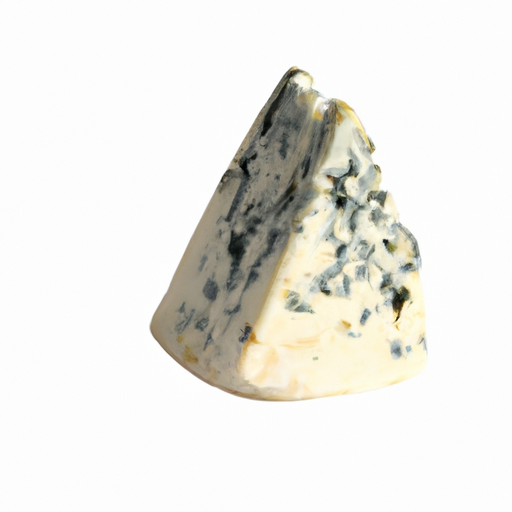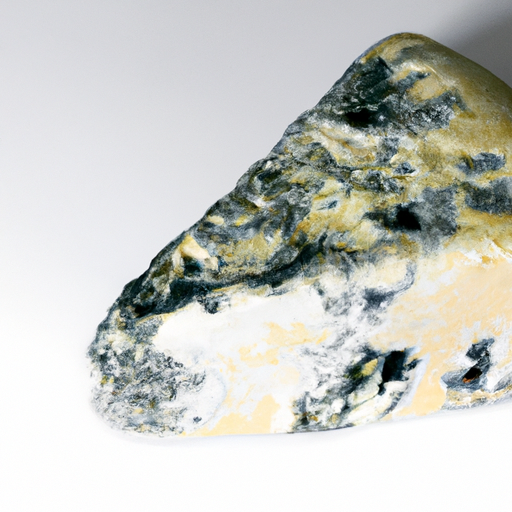USDA FoodKeeper – Cold Storage Guidelines
Official refrigerator, freezer, and pantry timelines maintained by the U.S. Department of Agriculture.
Visit USDA FoodKeeperBlue cheese wedge brings a bold, tangy flavor that elevates salads, pastas, and cheese boards alike. To enjoy its unique profile safely, remember to store it in the fridge, where it stays fresh for up to 21 days. Even after its prime, it can still be good for a week, but always trust your senses!
"According to FDA guidelines, blue cheese wedges should be stored in the refrigerator at a temperature of 40°F or below and consumed within 3 to 4 weeks of opening for optimal quality and safety."


Fridge
34-40°F (1-4°C)
Wrap in cheese paper or wax paper. Store in airtight container. Keep away from moisture.
21 days
120 days
Unusual mold growth beyond blue veining, off odor, slimy texture
Dressings, sauces, cheese boards
Gorgonzola, Roquefort, Stilton
The expiration date on blue cheese indicates the last date the cheese is guaranteed to be at its best quality in terms of flavor and texture. Consuming blue cheese past the expiration date may result in a decline in taste and texture, but it does not necessarily mean the cheese is unsafe to eat. Best quality refers to the peak flavor and texture of the cheese, which may be before the expiration date. It is recommended to consume blue cheese before the expiration date for the best culinary experience.
To tell if a Blue Cheese Wedge has gone bad, look for any signs of mold growth beyond the typical blue veins. A sour or ammonia-like smell may indicate spoilage, as well as a slimy or excessively soft texture. If you notice any of these indicators, it's best to discard the cheese to avoid potential foodborne illness.
Blue cheese is a type of cheese that has mold cultures intentionally introduced during the aging process. While most molds used in blue cheese production are safe to consume, individuals with mold allergies or compromised immune systems should avoid consuming blue cheese. There is a risk of foodborne illness if blue cheese is not stored properly or consumed past its expiration date.
To store blue cheese properly and prolong its shelf life, wrap it in wax paper or parchment paper to allow the cheese to breathe. Avoid wrapping blue cheese in plastic wrap as it can cause the cheese to sweat and promote mold growth. Store blue cheese in the refrigerator in the vegetable or cheese drawer, where the temperature is slightly warmer and more humid than the rest of the refrigerator. Before consuming blue cheese, allow it to come to room temperature for optimal flavor and texture.
Blue cheese has a rich cultural history and is believed to have originated in France. It is characterized by its distinct blue veins, which are formed by the introduction of mold cultures such as Penicillium roqueforti or Penicillium glaucum. Blue cheese is often associated with gourmet cuisine and is used in salads, dressings, and as a cheese course in fine dining establishments. In some cultures, blue cheese is considered a delicacy and is paired with sweet accompaniments like honey or figs to balance its strong flavor.
Blue Cheese Wedge can be left out at room temperature for up to 2 hours safely. Beyond that, it's best to refrigerate it to maintain its quality and safety. If left out for longer, discard to prevent potential foodborne illness.
If Blue Cheese Wedge has been at room temperature for 4 hours, it's recommended to discard it. Bacteria can multiply rapidly at room temperature, increasing the risk of foodborne illness. To ensure safety, adhere to proper storage guidelines.
Once opened, Blue Cheese Wedge can be consumed within 7 days if stored properly in the fridge. Ensure to seal it tightly to maintain freshness and prevent contamination. If there are any signs of spoilage, such as mold or off-smell, discard it immediately.
The type of container can impact the shelf life of Blue Cheese Wedge. Opt for airtight containers or resealable bags to prolong its freshness. Avoid storing it in containers that can easily let air in, as it can lead to quicker spoilage.
It's best to avoid storing Blue Cheese Wedge next to other dairy products due to the risk of cross-contamination. The cheese's strong flavors and molds can transfer to other dairy items, altering their taste and quality. Keep Blue Cheese Wedge separate to maintain its integrity.
Freezing Blue Cheese Wedge can alter its texture once thawed. The cheese may become crumbly or slightly grainy, but it's still safe to eat. To minimize texture changes, wrap the cheese tightly in plastic wrap before freezing. Use frozen Blue Cheese Wedge within 3 months for the best quality.
Yes, different brands of Blue Cheese Wedge may have varying shelf lives based on factors like production methods and preservatives used. Always refer to the specific expiration date on the packaging and follow storage guidelines accordingly. When in doubt, contact the manufacturer for more precise information.
Cooking Blue Cheese Wedge can alter its expiration date. Once heated, the cheese's texture and flavor may change, affecting its overall quality. It's recommended to consume cooked Blue Cheese Wedge within 2 days if stored in the refrigerator. Properly store any leftovers promptly to maintain freshness.
Blue Cheese Wedge generally lasts longer in cooler environments like winter compared to summer. Higher temperatures can accelerate spoilage, so ensure proper refrigeration during warmer months. Be mindful of storage conditions and consume the cheese before its expiration date to enjoy it at its best quality.
When transporting Blue Cheese Wedge for a few hours, use a well-insulated cooler with ice packs to maintain a cold temperature. Place the cheese in a sealed container to prevent exposure to other items and potential contamination. Upon reaching your destination, promptly refrigerate the cheese to uphold its freshness.
Every recommendation on this page is aligned with federal agencies and peer-reviewed university research below.
Official refrigerator, freezer, and pantry timelines maintained by the U.S. Department of Agriculture.
Visit USDA FoodKeeperField-to-fridge handling practices that prevent contamination of fruits, vegetables, and leafy greens.
Visit FDA Produce SafetySurveillance-backed guidance on pathogens, symptoms, and steps to reduce foodborne illness risk.
Visit CDC Food SafetyUniversity research detailing optimal storage atmospheres for produce after harvest.
Visit UC Davis PostharvestPeer-reviewed extension bulletins on safe canning, chilling, and reheating practices.
Visit Penn State ExtensionNeed deeper reading? Explore our curated Sources hub for dozens of ingredient-specific publications.
Scan your food directly and get instant safety info using our AI-powered camera feature.
We have recipes that can help you safely use blue cheese wedge past its expiration date!
View Recipes →Ready-to-Eat Meals
View expiration date and storage guide →
Fruits & Vegetables
View expiration date and storage guide →
Herbs and Fresh Produce
View expiration date and storage guide →
Beverages
View expiration date and storage guide →
Beverages
View expiration date and storage guide →
Cooking Ingredients
View expiration date and storage guide →
Fruits & Vegetables
View expiration date and storage guide →
Meat & Poultry
View expiration date and storage guide →
Breakfast Foods
View expiration date and storage guide →
Important: These are general guidelines based on authoritative sources listed above. Always use your best judgment and when in doubt, throw it out. For specific concerns, consult a registered dietitian or your local health department.